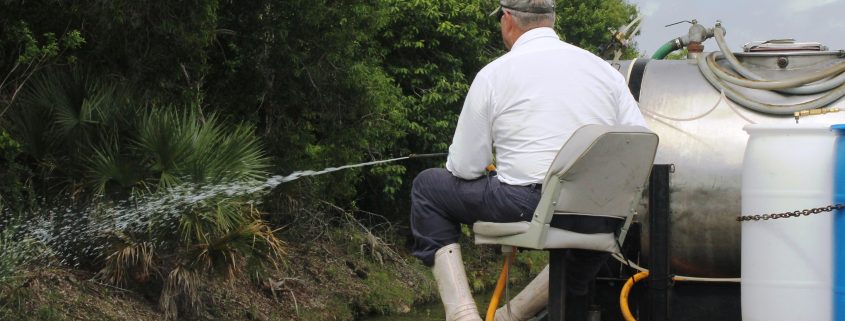Use Of Herbicides
With more than 500 miles of canals, the Lake Worth Drainage District (LWDD) must conduct continual maintenance of its waterways in order to provide its residents with effective flood control. An important maintenance function is the control of aquatic vegetation growth within the canal, which can block drainage discharge points and flood control structures.
Controlling the growth of aquatic plants is a never-ending task and requires the use of both herbicide treatments and mechanical methods to remove unwanted vegetation. LWDD strictly adheres to the regulations of the U.S. Environmental Protection Agency and the Florida Department of Environmental Protection for the application of various herbicides associated with aquatic vegetation management. Employees responsible for the treatment of aquatic vegetation are trained and certified annually on the proper application and handling of any herbicides used. Although herbicide application is a very effective tool, LWDD is increasing its efforts to mechanically remove aquatic vegetation and reduce the use of herbicides in its maintenance practices.
Using mechanical means to remove aquatic vegetation includes the use of containment booms. Containment booms are floating ribbon-like structures that span the canal cross-section and extend one foot both above and below the water surface. As water flows through a canal or as winds blow across the water’s surface, floating debris will move through the canal network. The booms serve as a physical barrier, “corralling” the debris while allowing water to continue to flow unimpeded. The booms allow crews to effectively collect, treat and dispose of the material.
Due to South Florida’s subtropical weather and rapid vegetation growth, the use of aquatic herbicide may always be needed to some degree. However, LWDD will continue to look for ways to reduce its use of herbicides within the canal system while still providing for the safety and welfare of our residents.




